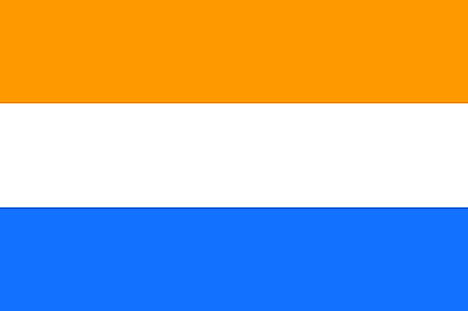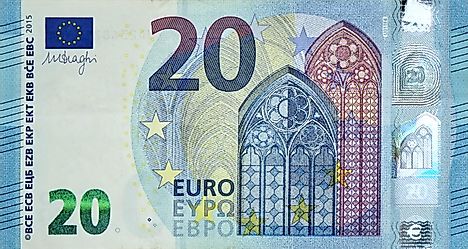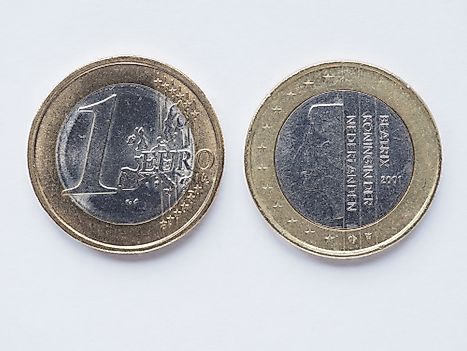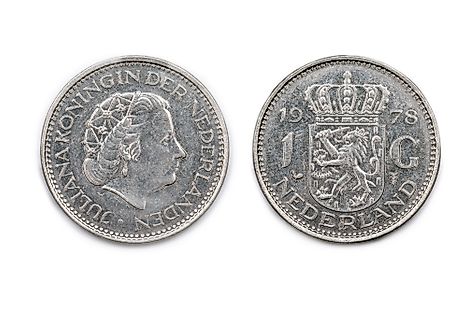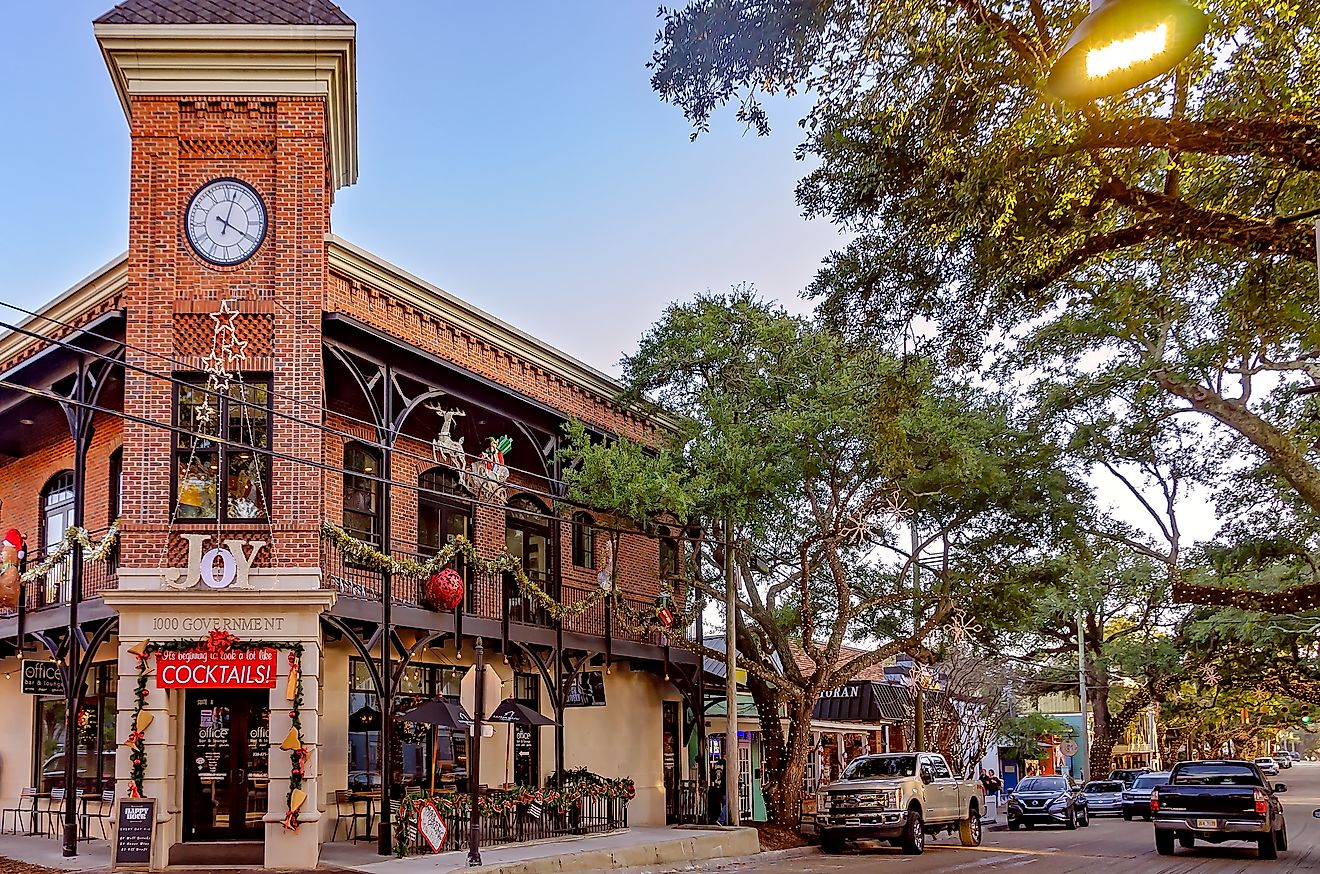Flags, Symbols, & Currencies of Netherlands
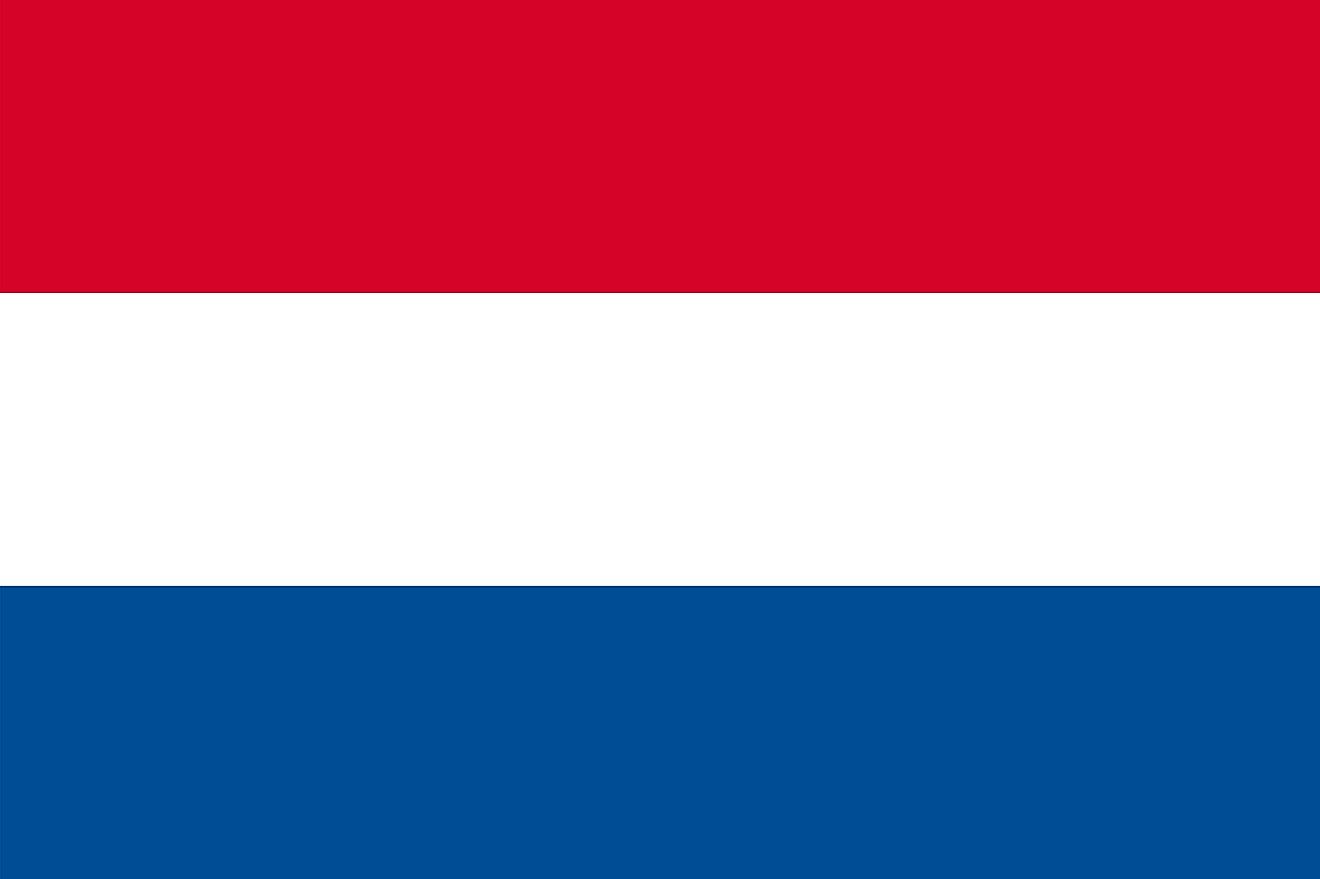
The Netherlands flag was officially adopted on February 19, 1937. It is a horizontal tricolor of red, blue, and white (from top to bottom) and its dimensions have a width-to-length ratio of 2:3. The fesses (stripes or bands) are equal in size, and use the following specific colors: the red stripe is officially bright vermillion; the white stripe is officially described as silver; and the blue stripe is described as cobalt blue.
Influence of the Flag of the Netherlands
The flag of the Netherlands has had a profound influence on the design of flags in other countries around the world as a result of shared history or economic relations. For example, the flag of Russia is thought to have been influenced by the flag of Netherlands, and in turn influenced the Slavic countries such as Croatia, Serbia, Slovenia, Slovakia, and Yugoslavia. Other countries include the Republic of South Africa and several other colonies which now form part of South Africa. The flag of the Netherlands also influenced the flag of Albany, the capital of the US state of New York, as well as the flag of the mayor of New York. Other influences include the flags of the following counties in the state of New York: Duchess, Ulster, and Westchester.
History of the Flag of the Netherlands
In 1572, William Prince of Orange rose to lead the Dutch against Spain in the struggle for independence, and he used the following colors: orange, blue, and white. While at Leiden is 1574, the soldiers' uniforms bore these colors as well. At the time, the flag earned the name The Prince’s Flag, because it was made in his honor. William is known within the Netherlands as the Father of the Fatherland. However, the orange color was unstable because it eventually turned red, and therefore in the 17th century the orange color was officially replaced with red, which has remained to date, although the official decree to adopt the flag was not was made until 1937.
Symbols of Netherlands
National Coat of Arms of Italy

The royal coat of arms is placed on a mantle of ermine surmounted by a crown. The coat of arms date from 1815, when the Kingdom of the Netherlands was founded but was first adopted in 1907. It is the same as the Dutch national coat of arms and originates from the House of Nassau in Germany. It consists of a blue checkered shield with a lion holding a sword in one hand and arrows in the other hand. The central lion is the same as the lion on the oldest coat of arms of Nassau, dating from the 13th century. Above the shield is a royal crown. Two lions support the shield on either side. Below the shield is a ribbon with the motto: "I shall maintain" in French
National Anthem
- Anthem Title: Wilhelmus van Nassouwe
- Composer: Adrianus Valerius
- Lyricist: Unknown
- Year of Completion: 1574
- Date of Adoption: 1932
The Netherlands' official national anthem is Wilhelmus van Nassouwe, or more commonly called Wilhelmus (translation: the William). It is considered to be the oldest national anthem of the world at 440 years old. Popular with the Dutch for centuries, it was not officially recognized as the Netherlands' national anthem until 1932. On most occasions, only the 1st and 6th stanzas (of 15 stanza) are sung.
The song was penned during The Netherlands's struggle to gain independance from Spain. It narrates the story of Willem van Oranie, or William of Orange, hislife and his reason as to why he is fighting with the King of Spain. The song is told from the point of view of William, with the anthem's lyrics written in first person.
There is some confusion regarding the consideration of Wilhelmus as the oldest national anthem in the world. This is attributed to the fact that Kimigayo, Japan's national anthem, has the oldest lyrics in the world, with the words written during the 9th century but the melody composed in the 19th century.
The anthem was created as the official song for the House of Orange and supporters. The lyrics are of unknown origin. The first melodic arrangement for Wilhelmus was created in 1574. In 1626, Adrianus Valerius, a Dutch composer, successfully slowed down the tempo of the melody in order for the anthem to be easily sung in church. The melody used in the current version is an arrangement by Walther Boe from 1932.
Wilhelmus
ben ik, van Duitsen bloed,
den vaderland getrouwe
blijf ik tot in den dood.
Een Prinse van Oranje
ben ik, vrij, onverveerd,
den Koning van Hispanje
heb ik altijd geëerd.
Mijn schild ende betrouwen
zijt Gij, o God mijn Heer,
op U zo wil ik bouwen,
Verlaat mij nimmermeer.
Dat ik doch vroom mag blijven,
uw dienaar t'aller stond,
de tirannie verdrijven
die mij mijn hart doorwondt.
The William
William of Nassau, scion
Of a Dutch and ancient line,
Dedicate undying
Faith to this land of mine.
A prince I am, undaunted,
Of Orange, ever free,
To the king of Spain I've granted
A lifelong loyalty.
A shield and my reliance,
O God, Thou ever wert.
I'll trust unto Thy guidance.
O leave me not ungirt.
That I may stay a pious
Servant of Thine for aye
And drive the plagues that try us
And tyranny away.
The Currency of Netherlands is the Euro
Netherlands, like most of the European countries, use the Euro as its official currency. The Euro was adopted as the country’s official currency in 2002, although the currency itself has been in use in the Netherlands since 1999 but only by electronic means and traveler’s check. Travelers visiting the Netherlands are often advised to convert their currencies to euro since no other currency apart from the euro is accepted in the country. The euro currency, like in other EU countries, is meant to eliminate headaches that European travelers would experience prior to the introduction of Euro. The euro came in both coins and banknotes in a wide range of denominations. Prior to the adoption of Euro, Dutch guilder was the Netherland’s currency.
Euro Banknotes And Coins
The euro currency was minted both in coins and banknotes. Coins were minted in several denominations ranging from 1 to 50 cents and € 1 and € 2. All the coins feature Queen Beatrix on the reverse. Banknotes were issued in the denominations of 5 to 500 euros.Coins tend to be more prominent in the Netherlands than the banknotes since most of the local businesses refuse to accept banknotes of larger denominations. While most of the Eurozone countries do not accept 1 and 2 cents, the denominations are still widely acceptable
Historical Currencies of the Netherlands
Dutch Guilder
The Dutch guilder was the Netherlands’ currency between the 1680s and 2002 when it was officially replaced by the euro. The guilder became a subunit of the euro between 1999 and 2002 with payments mainly done in guilder since there were no euro coins and banknotes. The term gulden was a Dutch adjective for “golden” indicating that the currency coins were made of gold. The currency was denoted by “f” or “fl” symbol derived from an old currency known as Florin. The original guilders had the image of Pallas Athena upstanding while holding a spear with a hat on top of it. The guilders replaced the silver coins that circulating in the United Netherlands. It was replaced by the French franc between 1810 and 1814 but was readopted after the Napoleonic wars. The guilder became decimalized in 1817 with one guilder subdivided into 100 cents. However, the last pre-decimal coin was withdrawn in 1848. The guilder was replaced by the euro in 2002 at an exchange rate of one euro for 2.20371 guilders. The banknotes that were in circulation at the time of the change of currency can still be exchanged until 2032.
Dutch Guilder Coins And Banknotes
Dutch guilders were minted in both coins and banknote. The first coins were made of silver, gold, and copper in different denominations. The circulating coins were redesigned in 1982 after the coronation of Queen Beatrix featuring the profile of the queen. The production of the guilder coins ceased after 2001. At the time of conversation, the circulating coins were in the denominations of 5, 10, and 25 cents, 1 and 5 guilders. Banknotes were in the denominations ranging from 5 to 1000 guilders. The notes depicted several Dutch celebrities including Joost Van den Vondel, Frans Hals, and Baruch de Spinoza.
